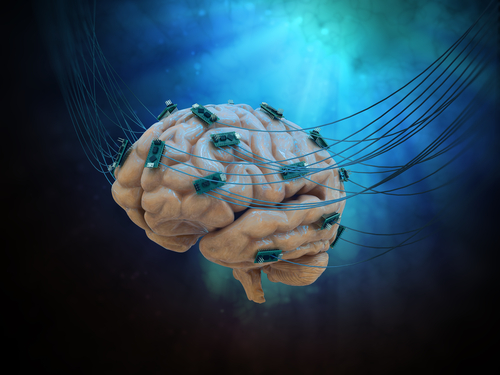Patients with rheumatoid arthritis (RA) who also have fibromyalgia (FM) have altered functional connections in the brain that promote inflammation and pain, a new study shows.
The study’s findings also suggest that symptoms of comorbid fibromyalgia and RA could respond to anti-inflammatory treatment.
The study, “Inflammation is associated with pro-nociceptive brain connections in rheumatoid arthritis patients with concomitant fibromyalgia,” was published in Arthritis and Rheumatology.
Some patients with rheumatoid arthritis report widespread hyperalgesia (enhanced pain response), fatigue, and cognitive difficulties, which is remarkably similar to what patients with fibromyalgia experience.
In fact, the prevalence of FM in RA patients ranges between 12–48% compared to 2–8% in the general population.
In the context of RA, researchers have long hypothesized that inflammatory nociceptive processes (which lead to inflammatory pain) change the central nervous system (CNS) by increasing signaling through pathways that promote pain (pronociceptive CNS pathways), driving the development of FM.
In support of this hypothesis, researchers have found evidence that functional brain connections are substantially altered in RA patients with high levels of inflammation.
Hence, researchers wanted to learn more about the impact of inflammation on pathways related to pain in patients with RA and FM.
Researchers said this study was designed “…to identify patterns of brain connectivity in RA that promote core symptoms of FM in response to inflammation.”
Twenty-seven RA patients with FM and 27 without FM underwent functional connectivity magnetic resonance imaging (MRI), which measures brain activity by detecting associated changes in blood flow.
Functional connectivity refers to the relationship between spatially separated brain regions. Thus, functional connectivity MRI helps determine the relationship between different regions of the brain.
Specifically, researchers looked at functional connectivity in regions of the brain previously linked to FM symptoms and inflammation. The association between functional connectivity and erythrocyte sedimentation rate (ESR) — a measure of inflammation — was also assessed in each group.
An assessment of clinical characteristics indicated that RA patients with and without FM did not differ by age, gender, or ESR.
In RA patients with FM, researchers found that the functional connectivity of the regions of the brain involved with inflammation were significantly altered in a way that would promote inflammation and pain compared to patients without FM.
Researchers also found that there was a relationship between ESR levels and connectivity changes between regions of the brain involved in inflammation, as in patients with comorbid FM changes in the connectivity between brain regions were associated with higher levels of ESR.
Finally, they showed that there was a significant interaction between FM scores, ESR rate, and functional connectivity changes.
“Here we provide the first neurobiological evidence that comorbid FM in RA may be linked to peripheral inflammation through [pro-pain] patterns of brain connectivity,” the authors concluded.
Significantly, researchers suggest that because of the connection between inflammatory signaling in the brain and FM, symptoms of comorbid FM in RA could respond to anti-inflammatory treatments. “Future studies will focus on patterns of inflammation-associated brain connectivity that predict improvement in concomitant FM after inflammation-dampening therapy,” they said.

